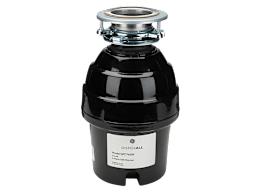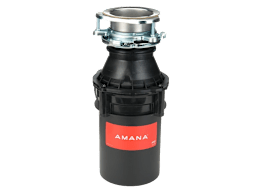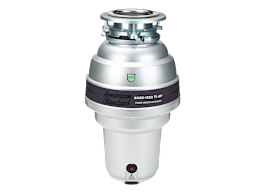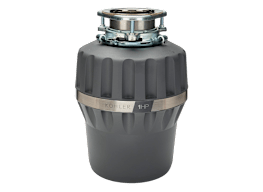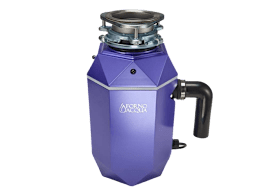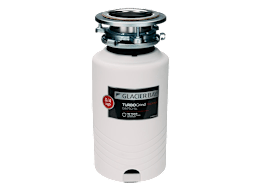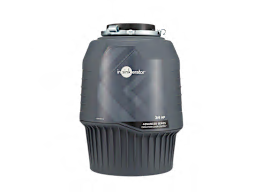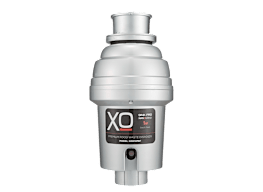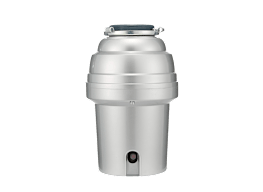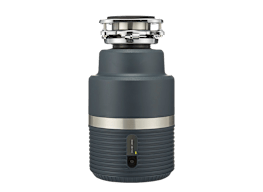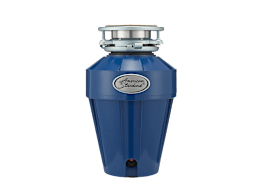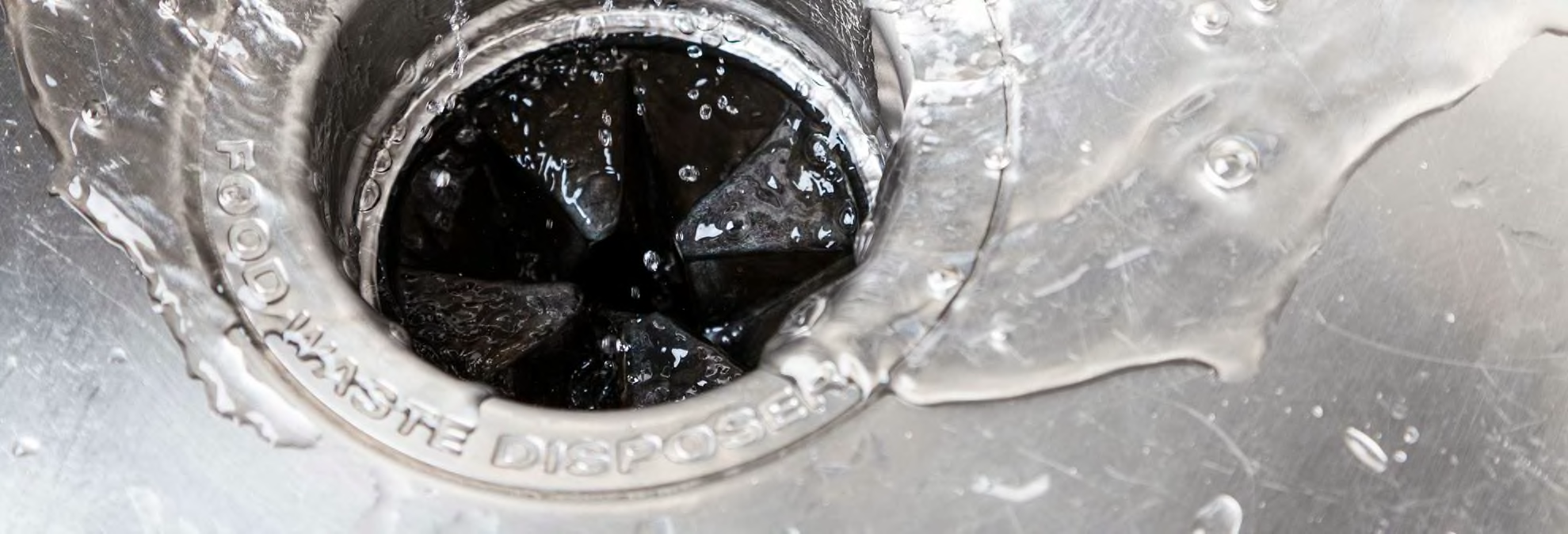
Garbage Disposal Buying Guide

Home & Appliances Writer
You might say garbage disposals do double duty, meeting the often competing demands of convenience and conservation. By grinding away meat scraps, corn cobs, fish bones and more, they can prevent your kitchen trash from getting soggy and smelly. And at the same time, they do the environment a favor by diverting decomposing food from local landfills.
Food is the single largest category of material placed in municipal landfills, the Food and Drug Administration says, based on food waste estimates from the Department of Agriculture’s Economic Research Service. According to the Environmental Protection Agency, food waste accounts for 58 percent of methane emissions from municipal solid-waste landfills, releasing greenhouse gases equivalent to more than 50 million gas-powered vehicles.
Dispatching food waste down the drain can allow for environmentally friendly processing at wastewater treatment plants. A number of major ones in the U.S. use a process called anaerobic digestion to turn the gas generated from food waste into biofuel. The remaining solids are turned into fertilizer for farms. So if you’re considering installing or replacing a disposal but are concerned about the environmental impact, find out how your local sewage treatment plant processes the town’s wastewater. (If your home has its own septic system, however, there may be other issues to consider.)
Just over half of the people in the U.S. have a garbage disposal at home, according to a February 2020 nationally representative CR survey of 1,000 adults. Of those who have one, more than 60 percent said their disposal was already installed when they moved in. According to the Association of Home Appliance Manufacturers, disposals last about 11 years, so if yours came with the place, it could soon be time to look for a new one.
You might be ready for a new disposal if you notice yours leaking, taking longer to grind, making louder than usual noises, or frequently requiring a reset. (The reset button is like a circuit breaker that needs to be reset after the disposal shuts off, typically because of a strain on the motor.) In fact, before you call the plumber—or throw down hundreds of dollars on a new grinder—try resetting the disposal by pressing the small (usually red) button on the bottom or lower back of the unit. If this doesn’t work, check the circuit breaker or fuse to make sure it hasn’t tripped. If that doesn’t work, it may be time to go shopping.
Here we cover everything you need to know about buying a garbage disposal, whether you’re looking to replace one or start from scratch. Our ratings of more than 60 lab-tested disposals will make the process even more seamless and help you make the best choice for your needs.
How We Test Garbage Disposals
Consumer Reports tests garbage disposals on three performance factors. For our speed test, we grind pieces of beef rib bones for 1 minute with cold running water and then measure how much food is left in the disposal. The more food left, the longer the disposal takes to grind and the lower the score.
To see how well a disposal grinds food, we toss in a mix of bones and raw vegetable scraps, then pass the resulting fragments through four different-sized sieves to gauge fineness. A garbage disposal that garners an excellent rating crushes food particles fine enough to slip through most of the sieves. If bigger bits are left over, there’s a greater chance the kitchen sink drain will clog, and that model will receive a lower score in this test.
For noise, we measure the decibels emitted while a disposal grinds a mix of bones and vegetables. In general, we find that heavier models, which have more insulation, tend to be quieter. For details on how each model we tested performed, see our garbage disposal ratings.
Before You Buy a Garbage Disposal
Before choosing a model, consider these three questions.
Are my pipes up to the task? Food debris might not present a problem in a newer home with slippery plastic drainpipes, but clog risks go up substantially if you have rugged old cast-iron drainpipes. Polyvinyl chloride (PVC) piping became more commonplace in homes built after the mid-1970s. One general rule: If your pipes already clog fairly often, a disposal might not be for you.
Is my septic tank big enough? Disposal manufacturers insist their products are safe to use with septic systems, but some plumbers are equally adamant that they are not. The truth probably lies somewhere in between and may depend on the age, type, and size of your system. You may need to pump your tank more often (once a year instead of the recommended three- to five-year intervals) or limit your garbage disposal use. If you have a septic system and want to install a disposal, check first with your local septic system inspector.
Is there room under the sink? Once you’re sure your plumbing can handle it, measure under the sink to make sure you have room for a disposal. The appliance attaches directly to the underside of your sink’s drain opening. There is no standard size for garbage disposals. The models we tested were 10 to 15 inches high, 5 to 9 inches wide, and 6 to 13 inches deep. Generally, the more sound insulation a unit has, the bigger it is.
Choosing the Right Garbage Disposal for You
The best model for you will depend on your budget, the size of your household, and how much waste you need to grind on a regular basis.
The garbage disposals in our ratings range from about $60 to $750. Less expensive models usually have small motors and a one-year warranty. A premium price doesn’t necessarily buy better performance, but it does buy premium features, such as a longer warranty, thicker sound insulation, sturdier stainless steel components, multiple grind stages, and auto-reversing modes that help prevent jams.
Disposals fall into two categories: continuous-feed and batch-feed.
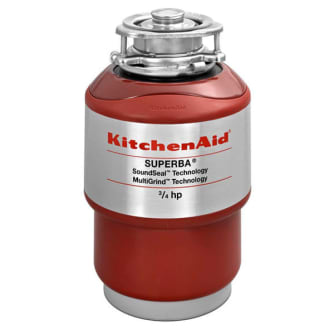
Continuous-Feed Models
Pros: These are the most common type, so you’ll find more options, including models at budget-friendly prices. Some people find them more convenient because you can toss food scraps in while they’re running.
Cons: Continuous-feed models are sometimes powered by a wall switch (sold separately) that should be installed by an electrician. Alternatively, an air switch—which uses a burst of air to activate a switch inside the unit—does not require professional installation but does require an under-sink outlet and a drill.
Because these disposals can run with the drain open, there is the risk of objects—such as utensils—falling in or food debris flying out.
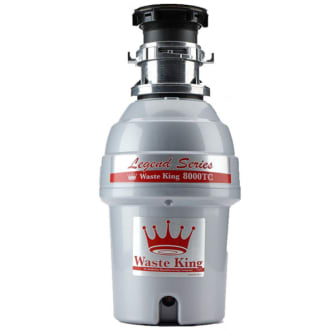
Batch-Feed Models
Pros: Rather than throwing food waste down the disposal as it’s running, you insert scraps into these models one batch at a time, then place a stopper over the drain opening to turn it on.
Because this type operates only when the drain is covered, it reduces the risk of injury. And because these don’t require wall switches, they’re a great option for kitchen islands.
Cons: In general, batch-feed garbage disposals are more expensive than continuous-feed models. They make up a very small percentage of the market, so options are limited.
How Much Power Do You Need?
The last major decision? Horsepower. Garbage disposal motors come in varying power ratings, with most ranging from ⅓ hp to 1 hp. Generally, you’ll get a more efficient grinder and better sound insulation as you go up in horsepower—but you’ll also pay more.
An entry-level ⅓-hp garbage disposal may be a good option for a vacation home, but it might not withstand heavy-duty or frequent use. Garbage disposals with ½ hp or ¾ hp should be adequate for the typical home. Cooks who use the disposal daily and need to grind tougher waste, including bones, may want to opt for a 1-hp model.
We also indicate amps—the amount of electricity the disposal draws—in our ratings charts. Be sure your circuit breaker can handle the demand before buying. Use a special ground fault interrupter (GFI or GFCI) circuit breaker, which protects against electrocution whenever there’s a risk of water coming into contact with plugged-in equipment. If you don’t know how to install a garbage disposal, CR recommends that you hire a plumber.
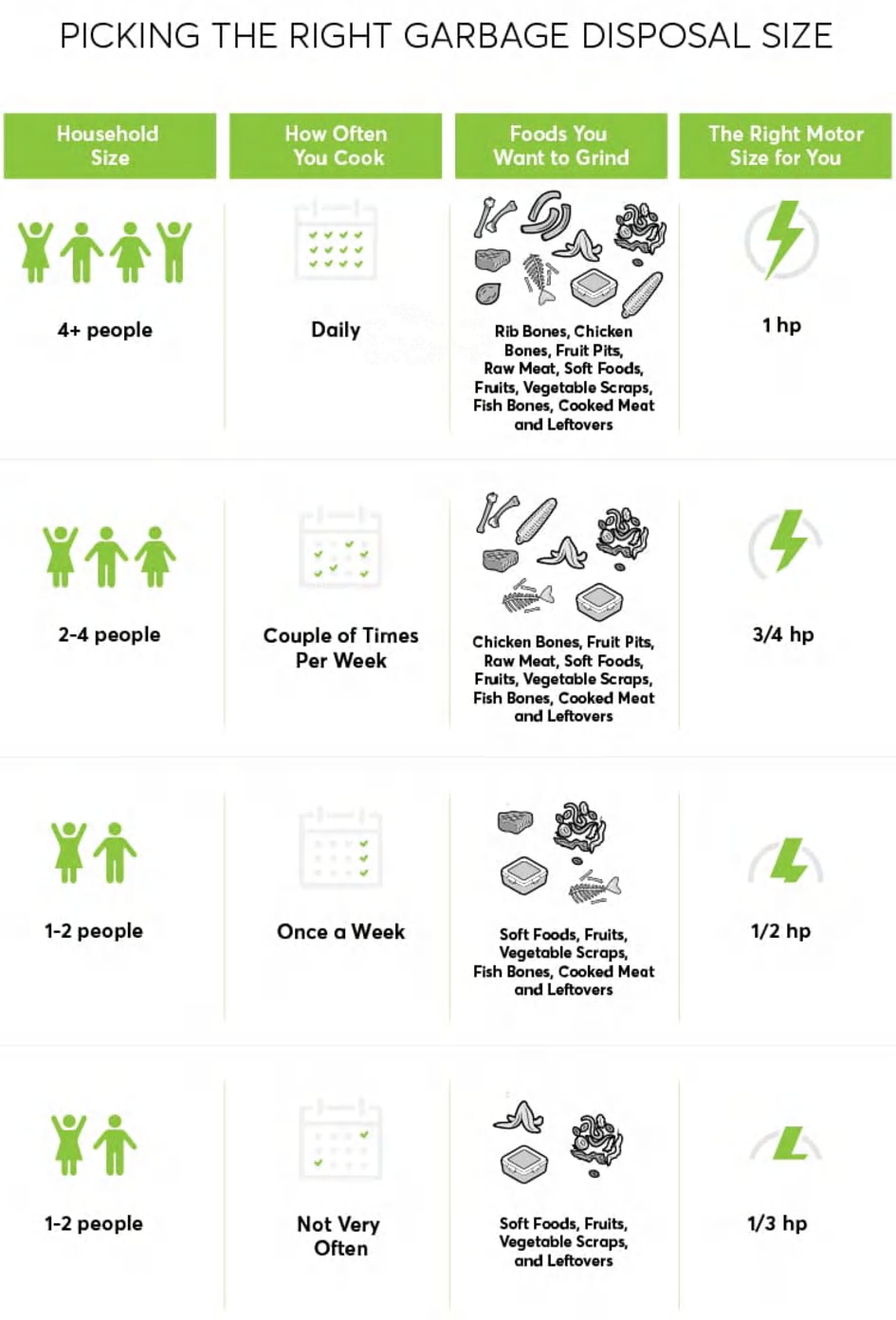
Garbage Disposal Features to Chew On
Here are some garbage disposal features to consider.
Power cord: Some garbage disposals come without the power cord, so you’ll need to buy one (about $15) unless you reuse the power cord from your old disposal or plan to hardwire your disposal instead.
Anti-jamming feature: Some higher-end disposals come with an auto-reverse feature that detects jams and automatically reverses the grind table to help loosen lodged food and prevent jams.
Stainless steel: Disposals with grind chambers and components made of stainless steel resist corrosion and often last longer.
Quick-mount or EZ-mount feature: This mounting design allows for easier installation, using a turn-and-lock system to secure the disposal to the sink.
Multiple grind stages: Basic models include only one grind stage, while premium models have as many as three separate stages to completely pulverize hard foods, such as bones and corn cobs.
Quiet operation: Some disposals incorporate sound-deadening elements, such as insulation around the disposal, nylon-coated grinding parts, insulated mounting baffles, sound baffles at the sink opening, and flexible mounting connections to reduce excess vibration. Manufacturers are not required to publish a disposal’s decibel level, but we test and rate noise in our lab.
Warranty: In general, garbage disposals last about 11 years, which is longer than most warranties, so rethink spending more for a longer warranty.
Garbage Disposal Brands
Garbage disposals tend to be dominated by a relatively small number of manufacturing brands, more so than other kitchen appliances.
Everbilt is a store brand available only at Home Depot. All models come with a power cord and three-bolt mounting. Warranties range from three to 10 years, depending on the model’s horsepower. (One model comes with a lifetime warranty.)
GE manufactures garbage disposals and a wide range of other appliances, such as refrigerators, dishwashers, ranges, cooktops, wall ovens, microwaves, washers, dryers, and air conditioners. It offers low-horsepower garbage disposals for smaller households and heavy-duty units for large homes with busy kitchens. GE garbage disposals offer warranties up to seven years, depending on the model.
InSinkErator introduced the garbage disposal to Americans in the late 1920s and is the largest and most well-known name in disposals today. Owned by Whirlpool Corporation, the brand makes dozens of models with various configurations, which are available at home improvement chains and hardware stores. The disposals are made in Racine, Wis. InSinkErator also manufactures KitchenAid and Whirlpool garbage disposals. InSinkErator is the only company that uses multistage grinding technology in its products (though only its top-end models have this feature). All of its models use a quick-lock mounting system, so you can install a replacement disposal on an existing sink mount with just a twist. Warranties range from one to 10 years, depending on the model’s horsepower.
InSinkErator manufactures KitchenAid garbage disposals, so you can expect some of the same features, such as multistage grind technology and sound reduction features. Warranties range from one to seven years, depending on the model’s horsepower.
This well-known maker of faucets and sinks launched its first garbage disposal line in 2016 and now owns Waste King. Each Moen disposal comes with a power cord, eliminating the need to purchase it separately or hardwire the unit to a power supply under the sink. In 2019, the brand introduced a motion-activated garbage disposal light to illuminate the storage space under the kitchen sink when the cabinet door is opened.
This brand is the second-largest name in garbage disposals (behind InSinkErator). Waste King garbage disposals are manufactured by Anaheim Manufacturing, which is owned by Moen. Waste King also manufactures garbage disposals for Frigidaire. All Waste King garbage disposals come with a power cord and are widely available at home improvement chains and hardware stores. Warranties range from two to 20 years, depending on the model’s horsepower.
The Joneca Company, which makes WasteMaid disposals, has been in business for more than 35 years, with its headquarters in Anaheim, Calif. WasteMaid is the third-largest brand of garbage disposals. Its models feature what it calls a Bio Shield, which Joneca claims will help prevent microbes from growing inside the disposal.
















